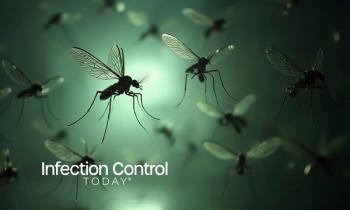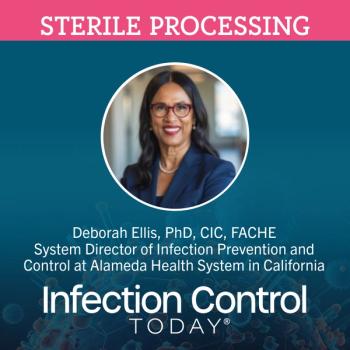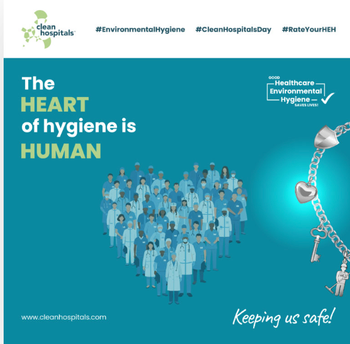
A Profession Without a Path: Reforming Infection Prevention and Control Education and Workforce Development
Despite its critical role in patient safety, infection prevention and control (IPC) remains one of health care’s most misunderstood and understructured professions. While COVID-19 thrust IPC into the spotlight, the field still lacks a clear entry path, standardized training, and broad institutional recognition, leaving many professionals to learn on the job with minimal guidance.
Infection prevention and control (IPC) has been an essential yet often overlooked component of health care since the early 1950s. However, it wasn't until the COVID-19 pandemic in 2020 that the field was thrust into the global spotlight. IPC professionals have worked behind the scenes for decades, often with limited resources, minimal funding, and little institutional recognition. Despite their critical role in preventing health care-associated infections (HAIs) and improving patient outcomes, IPC specialists have struggled to gain the professional status and support afforded to other health care disciplines. The pandemic highlighted the urgent need for a stronger IPC workforce; yet, the field remains misunderstood and inaccessible to many aspiring professionals even today.
Unlike well-established health care professions such as nursing and respiratory therapy, IPC has never been fully recognized as a distinct career path with clearly defined educational and professional entry points. Nurses, respiratory therapists, and other allied health professionals follow structured pathways that outline specific degrees, certifications, and licensure requirements. In contrast, there is no standardized route for individuals seeking a career in IPC. Instead, many current IPC professionals entered the field by accident, often transitioning from roles in nursing, microbiology, public health, or laboratory sciences rather than by deliberate choice.
The lack of formalized education and training programs leaves many potential IPC professionals uncertain about how to enter and advance within the field. Many professionals frequently enter the field with minimal or no expertise in applying IPC practices, yet they are required and expected to serve as the primary gatekeepers of infection control. Consequently, their training is often conducted on the job and through trial and error.
Organizations such as the Association for Professionals in Infection Control and Epidemiology (APIC) and the Certification Board of Infection Control and Epidemiology (CBIC) have worked to elevate the profession through advocacy, certification programs, and educational initiatives. While these efforts have helped legitimize IPC as a critical function in health care, they have not yet created a universally recognized career pathway. As a result, many interested individuals find the field challenging to navigate, with no clear starting point or roadmap for professional growth. The perception that IPC is a niche or specialized role rather than a foundational pillar of health care operations further complicates the situation.
The Centers for Medicare & Medicaid Services (CMS) has identified the requirement for individuals responsible for IPC as part of the conditions of participation. Individuals responsible for the hospital IPC program are often referred to as “hospital epidemiologists (HEs),” “infection control professionals (ICPs),” and/or “infection preventionists (IPs).1”
CDC has defined “infection control professional” as “a person whose primary training is in either nursing, medical technology, microbiology, or epidemiology and who has acquired specialized training in infection control.”2
However, there are still varying job descriptions and expectations across health care facilities, which compound the challenge of establishing a structured IPC workforce. Some institutions view IPC as an administrative function, while others see it as a clinical or public health role. This inconsistency contributes to confusion regarding the necessary skills, competencies, and qualifications to excel in the field.
Moreover, because many IPC professionals enter the field from diverse backgrounds, there is no standardized curriculum or training model that ensures uniform competency among practitioners.
In contrast, fields such as nursing and respiratory therapy have well-established academic programs, structured mentorship opportunities, and robust continuing education frameworks designed to develop expertise. These professions do not focus solely on entry-level knowledge but emphasize skill refinement, specialization, and career advancement.
However, IPC remains an evolving discipline that lacks the same level of institutional support. For IPC professionals, learning is often self-directed, reliant on mentorship, or gained through on-the-job experience rather than a formalized academic structure. This creates significant barriers for those passionate about infection prevention who lack the necessary guidance or resources to enter the field.
Given the increasing importance of IPC in modern health care, there is an urgent need to establish clear pathways for training and professional development. Without structured educational programs, standardized competency requirements, and greater institutional recognition, IPC will struggle with workforce shortages, inconsistent training, and a lack of long-term career sustainability. While the APIC has developed several guidance documents for novice IPCs, it does not address the fundamental question: How does one initially become an IP?
This paper (published as a series of articles) explores gaps in training and proposes solutions for structured education and mentorship. We can work toward making IPC a more accessible and well-defined profession. Strengthening the IPC workforce will enhance patient safety and infection control outcomes, ensuring health care systems are better prepared for future public health threats.
Current Challenges
Identifying the gaps in recruiting talent into the field of IPC has become an increasingly monumental task. Given the diverse and extensive backgrounds of professionals entering the field, establishing a standardized baseline entry requirement presents a significant challenge. While most patient-facing health care roles necessitate a fundamental understanding of epidemiology, this does not ensure success or immediate competency in infection control. Unlike many other health care professions that offer a clearly defined entry point, IPC remains an elusive and often misunderstood career path. There are no structured "on-ramps" that clearly guide health care professionals toward IPC as a natural next step. As a result, most individuals in this field did not enter it intentionally, but rather by chance. They were often recruited into open IPC positions because their credentials aligned “closely enough,” not necessarily because they had a preexisting desire or a clear path to pursue this specialty.
To date, the CBIC has established the standard of proficiency in IPC through the a-IPC and CIC credentials. However, the CIC eligibility guidelines necessitate some experience in infection control. Specifically, the CIC exam requires at least 1 year of full-time, 2 years of part-time, or 3,000 hours of experience in infection prevention within the past 3 years.3 The most promising entry-level credential is the a-IPC exam, designed for interested and novice IPs, as it has no set eligibility requirements.
Editor's note: This is a message from Jessica Dangles, MBA, MS, PMP, CAE, executive director at CBIC: The guidelines are designed to set a candidate up for success on the examination, but these are not requirements and do not preclude others from applying who are working in the field of infection prevention and control. We would encourage prospective candidates to review the examination content outline and candidate handbook before applying for the examination. Please note that these guidelines also apply to the Long-Term Care Certification in Infection Prevention (LTC-CIP).
Please reach out to me directly with any questions (jdangles@cbic.org).]
Would the a-IPC credential suffice for any professional, regardless of background, to enter the field? Additionally, would hiring managers recognize an a-IPC certification as an IP?
The previous informal recruitment pipeline might have worked in the past, but as the field of IPC continues to evolve and expand, it is time we reconsider our approach. We must move toward formalizing and standardizing pathways into the profession so that individuals, especially those early in their health care careers, can intentionally pursue IPC with clarity, purpose, and support.
Although data on the demographics of the IPC workforce are limited, a 2017 national survey, highlighted in the article “Wanted: The Next Generation of Infection Preventionists,”4 reported that approximately 41.6% of the 4,078 IPs surveyed were aged 56 or older. For comparison, “By the Numbers: Nursing Statistics 2023,”5 by Carson-Newman University reported the average age of registered nurses as 52. This aging workforce underscores an urgent need to attract, train, and retain young professionals in IPC.
Many IPC professionals have historically transitioned from bedside nursing, leveraging their extensive clinical experience in a role focused on patient safety and infection prevention. While this clinical foundation is invaluable, IPC is much more than a bedside extension. The field encompasses clinical and nonclinical domains ranging from surveillance and data analysis to policy development, outbreak management, environmental hygiene, regulatory compliance, education, and beyond. These components are crucial to maintaining patient safety and ensuring infection-free facilities.
Given the age demographics and growing complexity of the role, the field of IPC is at a pivotal moment. We must act with urgency and vision to create formal training pipelines, certification opportunities, mentorship programs, and clear professional pathways that welcome and actively encourage the next generation to join our ranks.
Another significant challenge in the recruitment and staffing of IPC professionals, although improving in recent years, particularly after the COVID-19 pandemic, remains the lack of understanding of the field's function by hospital administrators, human resources departments, and hiring managers. While there has been progress, and many now have a better understanding of IPC's scope in the US, a considerable gap remains in fully comprehending the breadth of the role.
This misunderstanding can lead to skewed perceptions of the necessary qualifications and skills, resulting in hiring individuals who are not well-suited for these positions. The misalignment in expectations makes it even more challenging for qualified candidates to enter the field. Consequently, many IPCs exit the field and revert to their original roles, where responsibilities are more clearly defined and opportunities for career advancement are more readily available. Furthermore, the diminished emphasis on the IPC role in health care, stemming from inadequate staffing provisions, has prompted numerous hospitals to assign IPCs to additional or shared roles across various departments. This practice has resulted in a suboptimal infection prevention program.
A key example of this can be seen in the field of nursing. Many hospital administrators and HR professionals incorrectly assume that nurses are the ideal candidates to serve as IPs. Due to budgetary constraints, many hospitals employ nurses who can fulfill dual roles as IPs and floor nurses. While this approach is financially pragmatic, it may lead to burnout for the individuals due to the demands of managing both responsibilities. The IP role encompasses several critical requirements, the most significant being the regulatory mandates directly tied to Medicare reimbursements. These mandates pertain to reporting, surveillance, and quality measures. While nurses undoubtedly have valuable experience and skills, especially in patient care, their training typically does not prepare them for the complexities of epidemiology or public health, which are essential in the IP role. It’s necessary to note that while clinical knowledge is beneficial and transferable, having a bedside nursing background alone does not automatically equip someone to be an effective IP. This misconception not only pressures nurses to transition away from clinical roles but also crowds the field of IPC with individuals who may not be fully prepared for its responsibilities.
This issue stems partly from the lack of formalized pathways into IPC. Many hiring managers, faced with a shortage of qualified candidates, may hire individuals based on their proximity to the job description rather than ensuring they have the specific training or background required for practical IPC work. This approach can make it more challenging for new graduates, especially those who have pursued formal education in epidemiology, public health, or IPC, to secure positions in the field, despite being better suited for the role.
To draw an analogy, just as an epidemiologist or public health professional should not be expected to take on a clinical role without the proper training, the same should be true for nurses being thrust into IPC positions without appropriate education or certification in the field. While intersecting with clinical care, IPC work is a unique discipline that requires specialized knowledge in infection control methods, surveillance, data analysis, and regulatory compliance—skills that extend beyond clinical practice.
Additionally, a persistent and harmful misconception exists that clinical licenses are prerequisites for IPC roles. While clinical experience can be valuable, a clinical license is unnecessary to perform most IPC tasks. Much of the work can be done without a clinical license. This false belief that a clinical background is required has dissuaded many potential candidates, especially those with formal training in public health or epidemiology, from pursuing careers in IPC, as they feel unqualified or don't fit the clinical mold. This misunderstanding hinders the field from attracting a diverse pool of candidates with the appropriate skills, and we must correct this narrative.
For the field of IPC to continue growing and thriving, we must prioritize creating clear, standardized pathways into the profession, ensure that hiring managers understand the true scope and skill set required for the role, and dispel the myth that clinical licensure is a mandatory qualification. Administrators and hiring managers should be receptive to recruiting professionals from diverse fields into the nursing profession, rather than exclusively those with a nursing background, and should provide the necessary support. Only then can we begin to attract a more qualified, diverse, and capable workforce that will drive infection prevention forward in our health care systems.
This is the first of a series of articles by the authors on this topic.
References
- QSO-22-20-Hospitals: Infection prevention and control and antibiotic stewardship program interpretive guidance update. Centers for Medicare & Medicaid Services. US Department of Health & Human Services. Published July 6, 2022. Accessed April 14, 2025.
https://www.cms.gov/files/document/qso-22-20-hospitals.pdf - Infection Control Training and Education Resources. Centers for Disease Control and Prevention. Published 2021. Accessed April 14, 2025.
https://www.cdc.gov/infectioncontrol/training/index.html - Eligibility and Examination Overview. Certification Board of Infection Control and Epidemiology. Published 2023. Accessed April 14, 2025.
https://www.cbic.org/ - Wanted: The next generation of infection preventionists. Relias Media. Accessed April 14, 2025.
https://www.reliasmedia.com/articles/140190-wanted-the-next-generation-of-infection-preventionists?utm - Nursing by the numbers: Facts and stats. Carson-Newman University Online. Accessed April 14, 2025.
https://onlinenursing.cn.edu/news/nursing-by-the-numbers?utm
Newsletter
Stay prepared and protected with Infection Control Today's newsletter, delivering essential updates, best practices, and expert insights for infection preventionists.





